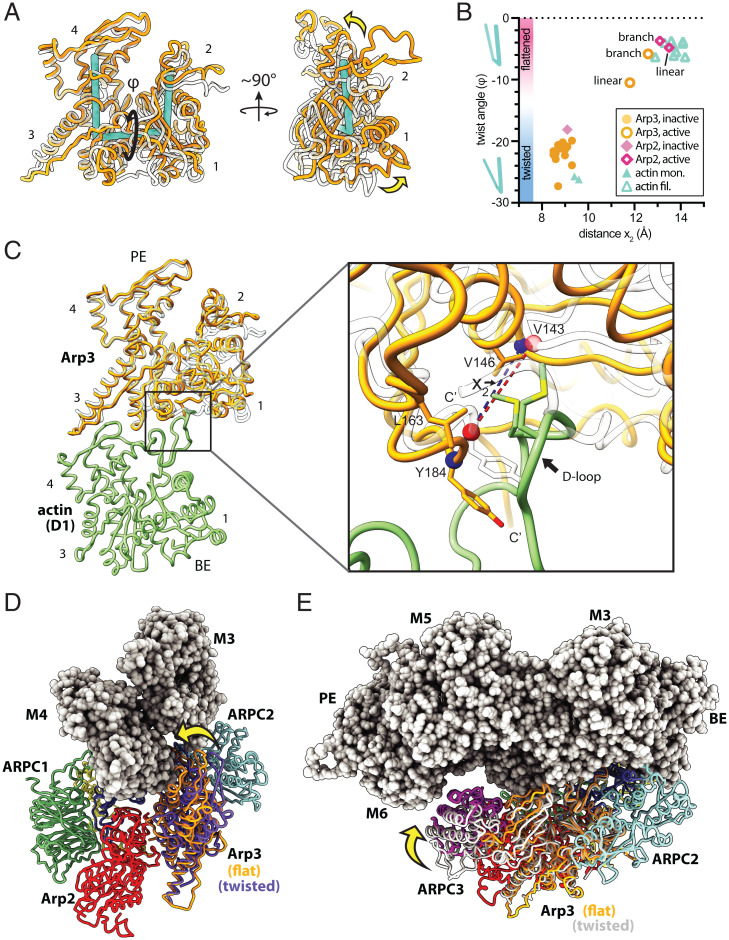Fig. 5.
Flattening of Arp3 increases contacts with the mother filament. (A) Structural superposition of subdomains 3 and 4 of Arp3 from the branch junction structure with Arp3 from the inactive Arp2/3 complex (PDB 4JD2). Flattening/twisting is measured as the dihedral angle (φ) defined by the center of mass of each subdomain. (B) Plot of the subunit twist angle versus the barbed end groove opening distance (see C) for structures of the active and inactive Arp2/3 complex and polymerized or monomeric actin. (C) Long pitch (intrastrand) interactions between Arp3 and actin subunit D1 in the daughter filament. Inactive Arp3 (PDB 4JD2, semitransparent rendering) is superposed onto Arp3 from the branch junction structure using subdomains 3 and 4. (D) Structural superposition of subdomains 1 and 2 of inactive Arp3 (4JD2, purple) with the same subdomains from Arp3 in the branch junction structure (orange). Yellow arrow shows the movement of subdomains 3 and 4 in Arp3 toward the mother filament caused by flattening. ARPC3 is omitted for clarity. (E) Reorientation of the structural superposition shown in D. The inactive (twisted) conformation of the complex is shown in white ribbon representation in this panel, and ARPC3 is rendered in magenta.

